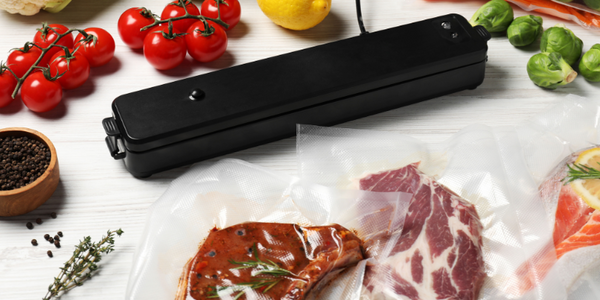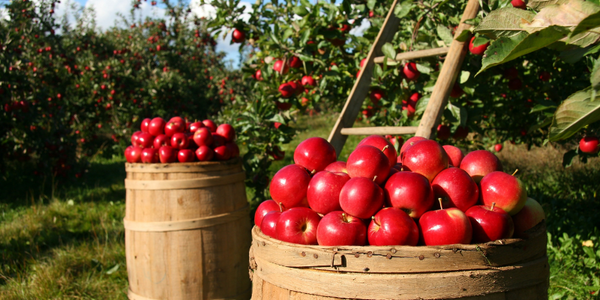Posted on July 13 2020

When going into the backcountry, one of the most important considerations is food. Unless you are an ultra-light survival fanatic, you will want to pack food in. The amount of food you should bring depends on many factors including how long you intend to be in the wilderness, how many calories you expect to burn each day, the amount of weight you can reasonably carry, whether or not you will be able to hunt or forage, and your comfort level. There is a lot of discussion about rules of thumb for food rations on the internet. To some extent, the amount of food one should pack varies by person and trip conditions. A much less thoroughly discussed subject is what to eat.
Food Options
Arguably the most convenient foods available are MREs (“meals ready to eat” created by the military) and freeze-dried meals. Both of these options are lightweight and quick to prepare but lacking in flavor, heavy on packaging, and relatively expensive. Backpacker’s Pantry seems to be the brand of choice, but not all their recipes are equally well received. The REI website has many customer ratings on their freeze-dried food offerings that may help to guide selection, but if cost is a major factor it may pay to shop around. Some people prefer such food due to its convenience, but getting creative in the food planning process can result in healthier, tastier, and more cost-effective alternatives that may have more appeal to those embarking on longer trips.
Foods that contain little to no water, keep well without refrigeration, have high nutritional value, and can be used in multiple ways make good candidates for ingredients of backcountry meals. Since water is easily the heaviest thing one can pack, the less water food contains the better. Dried or dehydrated foods offer the benefit of reduced water content and thus reduced weight. They also keep well without refrigeration. Many fruits, vegetables, fish, and meats can either be dried or dehydrated at home or bought in this state, providing a wide range of options to the meal planning backpacker. Vacuum seal your choices in zipper vacuum sealer bags for easy accessibility and reuse.
Grains, noodles, oats, and powdered milk have very low moisture content and keep without refrigeration for relatively long periods of time. Spices, dried herbs, salt, pepper, garlic and sugar also weigh very little, are highly versatile, require only small amounts to make a big impact on flavor, and keep for long periods of time.
Salting and pickling are two time-tested methods of food preservation that reduce water content and may be worth the effort when it comes to protein-rich eggs, meats, and fish. Certain types of pre-salted meats or fish may be available in supermarkets.
Tomato paste and other concentrated liquids are lighter than their alternatives but the weight of the packaging materials may make them impractical unless trading longevity for weight savings by eliminating the container is an option.
Some fruits and vegetables like apples, onions, and potatoes can last for substantial amounts of time without refrigeration. Sweet potatoes in particular are highly nutritious.
Many cheeses can last a considerable amount of time without refrigeration. A good rule of thumb is the harder the cheese, the longer it lasts, the less water content it has.
Peanut butter is nutritious and calorie-rich, relatively lightweight, and keeps without refrigeration.
Meal Suggestions
Oatmeal is easy and quick to make, filling, and nutritious. The ingredients required are all lightweight and versatile. Oatmeal can be eaten plain or with a variety of toppings. Raisins and other dried fruit, nuts, sugar, and cinnamon make lightweight yet tasty toppings for oatmeal. Different combinations of toppings can provide variety without introducing added weight. Apples and bananas keep for a while without refrigeration and can be quickly sliced into a bowl of oatmeal. Sugar can be used to sweeten it up. Health food stores often carry several different kinds of oats as well as cream of wheat. Generally, the more the oats are processed the less nutritive they are, but the faster they cook. In a pinch, one could soak the equivalent of “instant oats” in water and eat without cooking. The dried fruits and nuts can also be eaten as trail mix and the fresh fruits can be consumed as a snack as-is. Peanut butter banana sandwiches are tasty as well.
Raw eggs can be used to make anything from omelets to cake. A study done by Mother Earth News found that homestead eggs with their natural bloom intact experienced a decline in quality and texture after about two months without refrigeration while washed commercial eggs did not last nearly as long. Re-hydrate vegetables and meat of your choice, chop up half an onion, slice a bit of cheese, season to taste, and fold all ingredients into the egg to make an omelet. Scrambled eggs paired with rice or potatoes and a meat of choice is another quick and simple option. A good pancake recipe requires few ingredients and can be a real treat after many days away from civilization.
Bread is fairly lightweight and can last about a week without refrigeration. Peanut butter and sugar (rather than jam to save weight) or banana sandwiches make a quick lunch. Canned fish like tuna or salmon can provide the basis of a good sandwich as well if the weight of the can is acceptable.
Burritos, tacos, crepes, musubi or any other “street food” intended to be eaten by hand in less than ideal circumstances makes a good starting point for backpacking food. Virtually every culture has its own version. For example, beans, cheese, and tortillas make for a tasty burrito while nori (dried seaweed), cooked rice, meat or fish, and maybe some furikake (nori based seasoning) would make a good musubi. Vietnamese-inspired spring rolls could also be created fairly easily.
Pasta, couscous, risotto, rice, and beans all make a good foundation for dinner. Tomato paste can be diluted with water and seasoned with salt, sugar, pepper, spices, and herbs to make a delicious pasta sauce. Spices are lightweight and potent requiring only a small amount to make a huge impact in flavor. Couscous seasoned with a Moroccan spice blend uses mostly lightweight ingredients and packs a ton of flavor. Where broth is called for in couscous, soup, curry, or risotto recipes, bouillon cubes or salted water make lightweight alternatives. Beans can be used to make chili or as an ingredient in many soups and Mexican entrees.
A lot of backpackers enjoy making pizza in the great outdoors. Pizza dough requires only flour, yeast, salt, water and perhaps a bit of oil. There are tons of possibilities for toppings. Breads and biscuits also require few ingredients.
Even desserts are possible. For something different, consider mochi (Japanese rice cakes that are widely available in dried form) rolled in kinako (sweetened soybean flour); mochi can also be used in savory dishes as a dumpling. “Uberbatman” on Fluther.com wrote that filling an empty orange peel with cake mix, wrapping the “ball” in foil, and throwing it on the fire creates “instant” orange flavored cake. Cake mix can be made fairly simply with flour, sugar, butter, and vanilla extract, eggs, and a bit of baking soda and/or powder. The ingredients are useful in creating many other foods whereas commercial cake mix is really only good for making cake.
The ultimate goal in food selection for a trip is striking a balance between weight and nutrition. If there is any food you expect to be able to forage, you can plan to do so and reduce the amount of food you pack accordingly. Remember the lighter you pack, the more enjoyable the trip. In general, try to select versatile, lightweight, nutrient-packed foods that do not require refrigeration. Most of your meal-prep can be vacuum sealed for your trip for easy transportation.
Select Recipes:
| Pancakes are an easy to make, easy to customize breakfast that you can prep ahead of time and store in a pack or cooler. | |
| Mushroom Mac N Cheese |
Dehydrated, high-energy, lightweight, one-pot dinner. |
| Don’t try to bring along regular rice for this, it will take forever to cook. Stick with white or brown Minute Rice which you can find at most grocery stores. | |
|
Specifically for backpackers; author cooks with a stove made from a soda can. |





0 comments